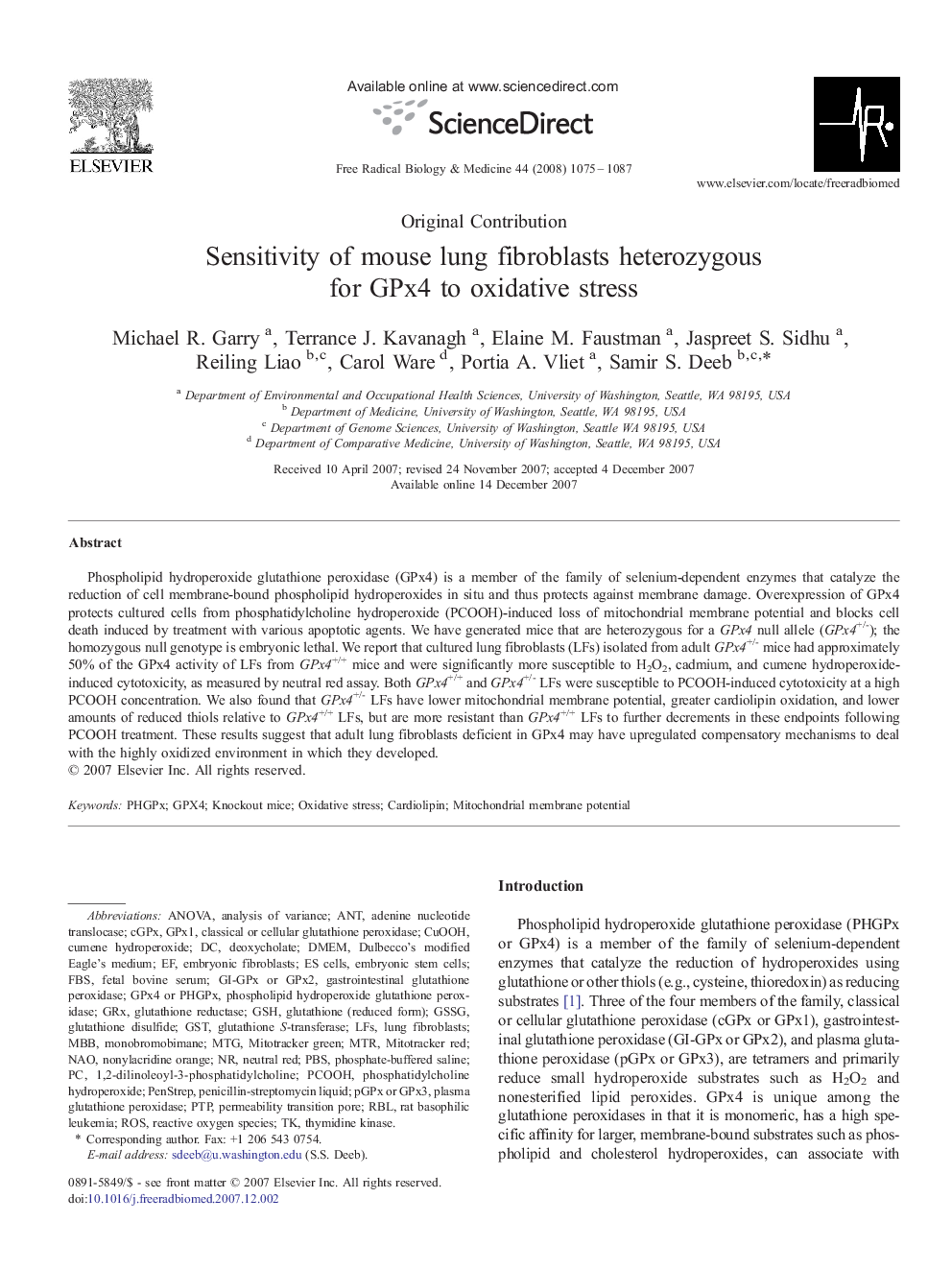| Article ID | Journal | Published Year | Pages | File Type |
|---|---|---|---|---|
| 1910793 | Free Radical Biology and Medicine | 2008 | 13 Pages |
Phospholipid hydroperoxide glutathione peroxidase (GPx4) is a member of the family of selenium-dependent enzymes that catalyze the reduction of cell membrane-bound phospholipid hydroperoxides in situ and thus protects against membrane damage. Overexpression of GPx4 protects cultured cells from phosphatidylcholine hydroperoxide (PCOOH)-induced loss of mitochondrial membrane potential and blocks cell death induced by treatment with various apoptotic agents. We have generated mice that are heterozygous for a GPx4 null allele (GPx4+/-); the homozygous null genotype is embryonic lethal. We report that cultured lung fibroblasts (LFs) isolated from adult GPx4+/- mice had approximately 50% of the GPx4 activity of LFs from GPx4+/+ mice and were significantly more susceptible to H2O2, cadmium, and cumene hydroperoxide-induced cytotoxicity, as measured by neutral red assay. Both GPx4+/+ and GPx4+/- LFs were susceptible to PCOOH-induced cytotoxicity at a high PCOOH concentration. We also found that GPx4+/- LFs have lower mitochondrial membrane potential, greater cardiolipin oxidation, and lower amounts of reduced thiols relative to GPx4+/+ LFs, but are more resistant than GPx4+/+ LFs to further decrements in these endpoints following PCOOH treatment. These results suggest that adult lung fibroblasts deficient in GPx4 may have upregulated compensatory mechanisms to deal with the highly oxidized environment in which they developed.
